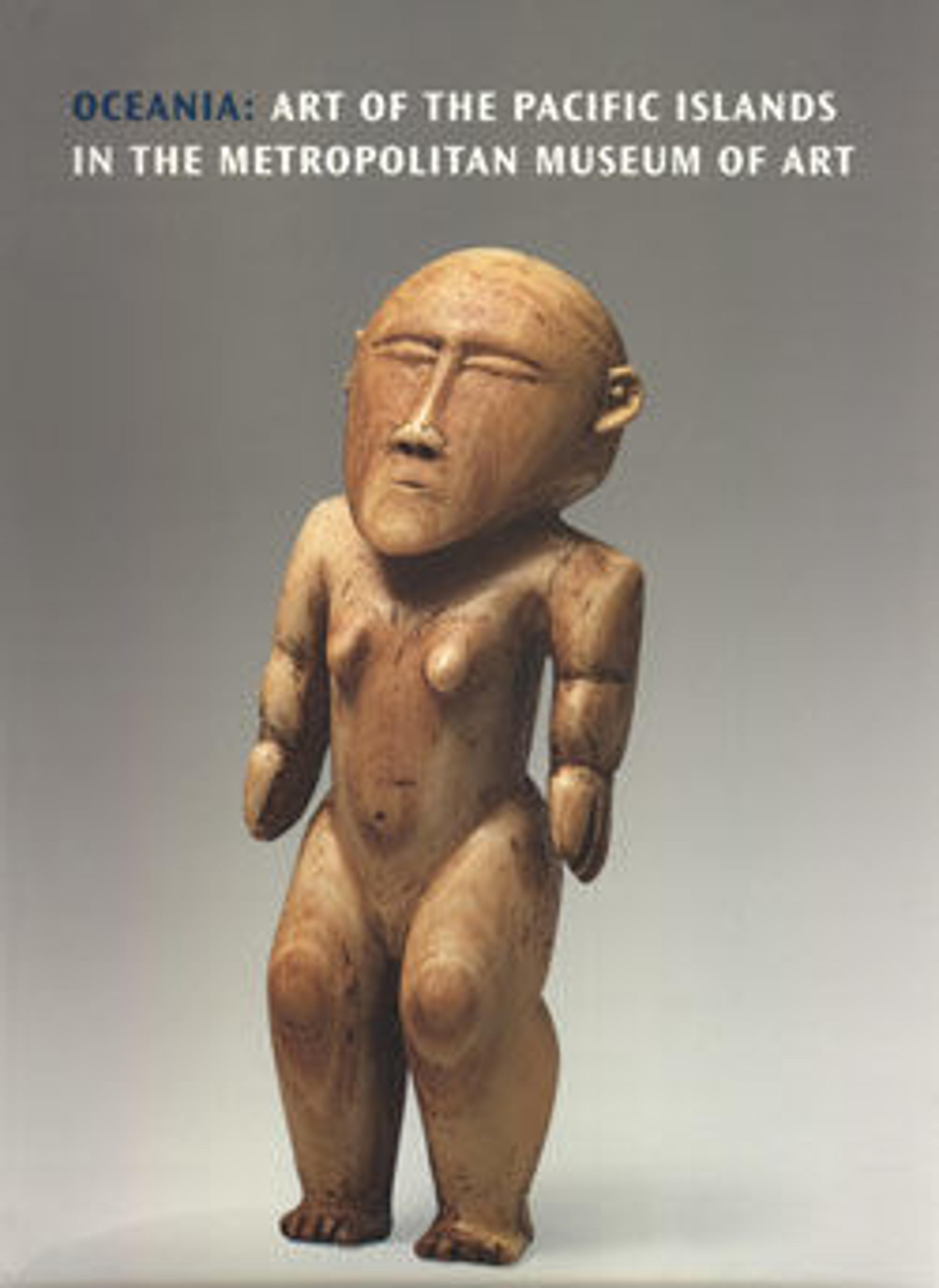Head
The heads of humans and of animals such as crocodiles and pigs formerly played integral roles in the ceremonial life of Papuan Gulf peoples, who considered the heads to be vessels of life-giving supernatural power. Within men’s ceremonial houses, human skulls were displayed, together with sacred images such as spirit boards, by the members of each clan in a specially constructed clan shrine. However, not all heads required the death of an enemy. In some areas, heads made from wood or other materials appear to have had powers equal to actual ones. In contrast to skulls, the facial features of wood heads are depicted as they appeared in life. This example comes from the Wapo Creek area, where wood
heads appear to have been used interchangeably with actual skulls. When headhunting was abolished by Australian colonial authorities in the early 1900s, Wapo Creek peoples were encouraged to substitute animal skulls. However, they refused, preferring instead to use wood heads like this one.
heads appear to have been used interchangeably with actual skulls. When headhunting was abolished by Australian colonial authorities in the early 1900s, Wapo Creek peoples were encouraged to substitute animal skulls. However, they refused, preferring instead to use wood heads like this one.
Artwork Details
- Title:Head
- Date:19th century
- Geography:Papua New Guinea, Papuan Gulf, Wapo Creek
- Culture:probably Gope people
- Medium:Wood
- Dimensions:H. 7 5/8 x W. 4 1/4 x D. 6 1/4 in. (19.4 x 10.8 x 15.9 cm)
- Classification:Wood-Sculpture
- Credit Line:The Michael C. Rockefeller Memorial Collection, Bequest of Nelson A. Rockefeller, 1979
- Object Number:1979.206.1580
- Curatorial Department: The Michael C. Rockefeller Wing
More Artwork
Research Resources
The Met provides unparalleled resources for research and welcomes an international community of students and scholars. The Met's Open Access API is where creators and researchers can connect to the The Met collection. Open Access data and public domain images are available for unrestricted commercial and noncommercial use without permission or fee.
To request images under copyright and other restrictions, please use this Image Request form.
Feedback
We continue to research and examine historical and cultural context for objects in The Met collection. If you have comments or questions about this object record, please contact us using the form below. The Museum looks forward to receiving your comments.
